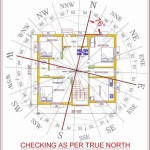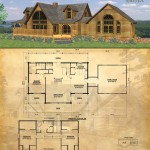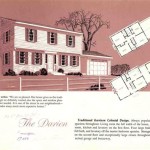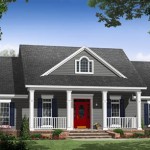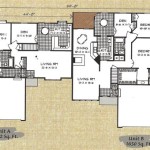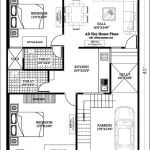House Addition Plans DIY: A Comprehensive Guide
Adding extra space to a home can significantly enhance its value and functionality. While hiring professionals is a common approach, the DIY route offers potential cost savings and a sense of personal accomplishment. This guide explores the essential aspects of DIY house addition plans, providing a roadmap for homeowners considering this ambitious project.
Careful planning is paramount to a successful house addition. This begins with defining the project's scope. Considerations include the intended use of the new space, desired size, and budget constraints. Accurate measurements of the existing structure and the planned addition are crucial for creating a realistic plan.
Understanding local building codes and regulations is a non-negotiable aspect of any construction project. Regulations vary by location and dictate permissible building sizes, materials, and safety standards. Contacting the local building authority is essential to obtain the necessary permits and ensure compliance.
Designing the addition requires careful thought regarding its integration with the existing house. The new space should complement the home's architectural style and maintain a cohesive aesthetic. Factors such as rooflines, window placement, and exterior finishes should harmonize with the existing structure. Sketching initial designs or utilizing online design tools can help visualize the finished product.
Budgeting for a DIY house addition involves more than just material costs. It's critical to account for permits, inspections, tool rentals, and potential unforeseen expenses. Creating a detailed budget spreadsheet and obtaining multiple quotes for materials can help manage costs effectively. Contingency funds should be allocated to address unexpected issues that may arise during construction.
Structural considerations are crucial for ensuring the stability and safety of the addition. This includes evaluating the existing foundation's capacity to support the additional weight and designing appropriate framing and support structures. Consulting with a structural engineer is advisable, especially for complex additions or modifications to load-bearing walls.
Choosing appropriate building materials impacts both the project's cost and durability. Options include traditional lumber framing, concrete blocks, or structural insulated panels (SIPs). Each material has its advantages and disadvantages in terms of cost, ease of installation, and energy efficiency. Researching different materials and considering their suitability for the specific climate and design is essential.
Proper insulation is vital for maintaining a comfortable indoor environment and reducing energy consumption. Factors to consider include the local climate, the type of insulation material, and the desired R-value, which measures thermal resistance. Installing insulation correctly, including sealing air gaps and ensuring proper ventilation, maximizes its effectiveness.
Electrical wiring, plumbing, and HVAC systems require careful planning and execution. Determining the placement of outlets, lighting fixtures, plumbing fixtures, and HVAC ducts should be done during the design phase. Adhering to local codes and regulations for these systems is crucial for safety and functionality. Consulting with qualified professionals for these aspects is often recommended, even in a DIY project.
Exterior finishes contribute significantly to the addition's visual appeal and weather resistance. Options include siding, stucco, brick, or stone veneer. The choice of exterior finish should complement the existing house and be suitable for the local climate. Proper installation is crucial for long-term durability and protection against the elements.
Interior finishing involves installing drywall, flooring, paint, and other fixtures. This stage offers opportunities for customization and personalization. Choosing appropriate materials and finishes that complement the overall design aesthetic is essential. Careful attention to detail during this phase contributes significantly to the finished product's quality.
Throughout the project, regular inspections are crucial for ensuring compliance with building codes and maintaining safety standards. Scheduling inspections with the local building authority at various stages of construction is mandatory. Addressing any issues identified during inspections promptly avoids delays and ensures the project's successful completion.
Safety should be a top priority throughout the entire construction process. Using appropriate safety gear, such as eye protection, gloves, and hard hats, is essential. Following safe work practices, including using ladders correctly and ensuring proper ventilation, minimizes the risk of accidents. Being aware of potential hazards and taking appropriate precautions creates a safer work environment.
While a DIY house addition offers potential cost savings and personal satisfaction, it's essential to recognize its challenges. Construction can be physically demanding and time-consuming. Unexpected issues can arise, requiring problem-solving skills and potentially increasing costs. Realistically assessing one's skills, available time, and resources is crucial before embarking on a DIY house addition project.

Sample Large Two Story Addition Pegasus Design To Build

Diy House Addition Building A From The Ground Up Kick Ass Or Die

14 Home Addition Ideas For Increasing Square Footage Extra Space Storage

Home Addition Plans Room Blueprint Garage Floor Plan

Sample Large Two Story Addition Pegasus Design To Build

Wall Framing Building Plans And Interior Remodeling Small Home Addition Construction Ideas

Independent Living Home Addition Building Plans Plan 1

14 Home Addition Ideas For Increasing Square Footage Extra Space Storage

Building Your Home Addition Homeowner Guide Design Build Kitchens Baths Additions And Remodeling In Homeowners Rigid Insulation
:max_bytes(150000):strip_icc()/Back-porch-addition-ea6ba8a2581e4767862267bfd37540a5.jpg?strip=all)
13 Stunning Home Addition Ideas Of All Sizes

